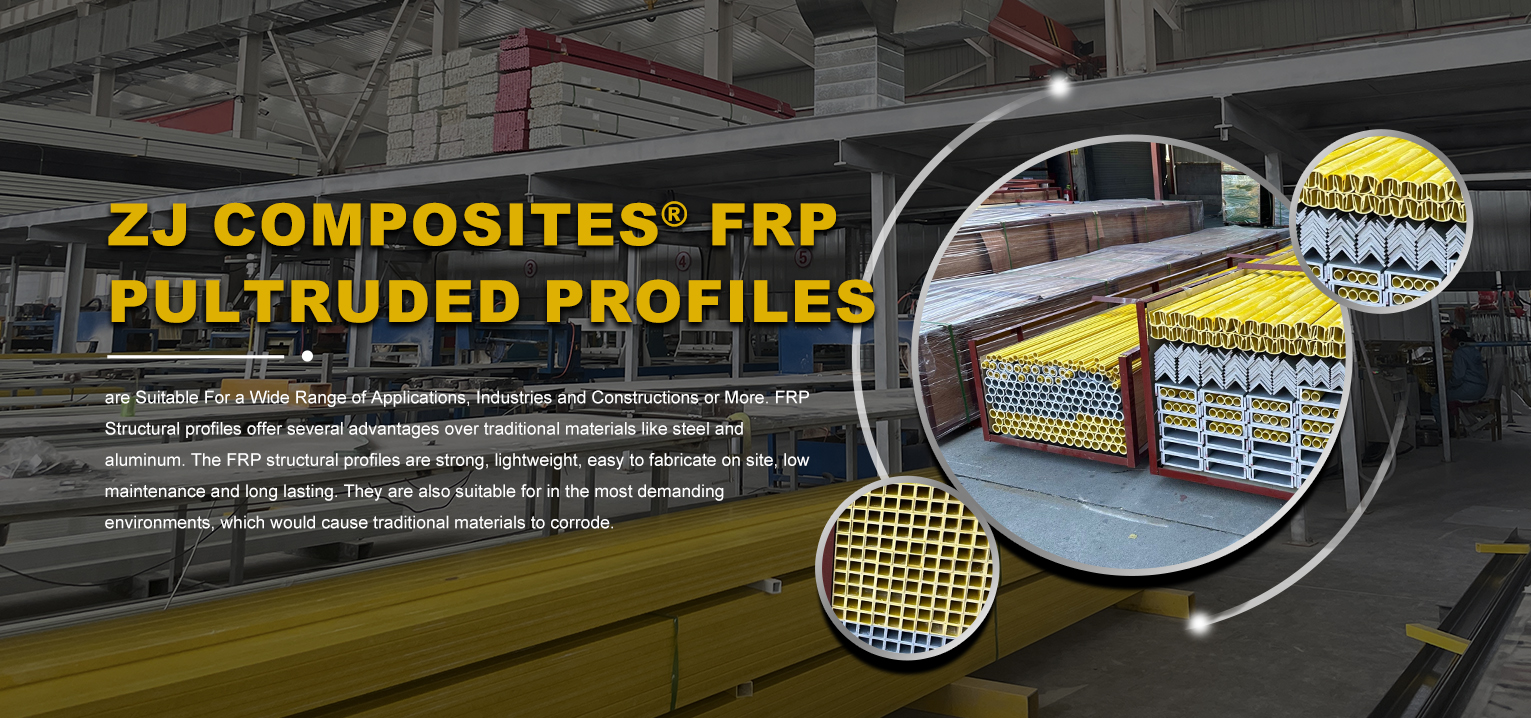loading...
- No. 9, Xingyuan South Street, Dongwaihuan Road, Zaoqiang County, Hengshui, Hebei, China
- admin@zjcomposites.com
- +86 15097380338
- Welcome to visit our website!
frp structural profiles
The Emerging Significance of FRP Structural Profiles in Modern Engineering
In recent years, Fiber Reinforced Polymer (FRP) structural profiles have emerged as a revolutionary alternative to traditional building materials such as steel and concrete. This innovation is destined to change the landscape of construction and design by introducing properties that enhance performance while minimizing issues associated with conventional materials. The use of FRP is expanding across various sectors due to its unique characteristics and advantages.
Understanding FRP Profiles
FRP is composed of a polymer matrix reinforced with fibers, commonly consisting of glass, carbon, or aramid. The combination of these materials results in a lightweight yet extremely strong structural profile. These profiles can be fabricated into various shapes and sizes, suitable for a diverse range of applications. Due to its versatility, FRP can be employed in everything from infrastructure projects, like bridges and tunnels, to residential construction and industrial applications.
Key Advantages of FRP Structural Profiles
1. Corrosion Resistance One of the most significant benefits of FRP is its inherent resistance to corrosion. Unlike steel, which can deteriorate over time when exposed to harsh environmental conditions, FRP remains stable and maintains its structural integrity. This property makes FRP an excellent choice for applications in coastal areas, chemical processing plants, and other settings prone to corrosive environments.
2. Lightweight Nature FRP profiles are remarkably light compared to traditional materials. This property not only facilitates easier handling and installation but also reduces the overall load on foundations and supporting structures. Consequently, this can lead to reduced construction costs and enhanced design flexibility.
3. High Strength-to-Weight Ratio The structural strength of FRP, combined with its low weight, results in superior performance capable of accommodating both static and dynamic loads. This high strength-to-weight ratio makes FRP an ideal material for applications requiring significant load-bearing capabilities without unnecessary bulk.
frp structural profiles

4. Thermal and Electrical Non-Conductivity FRP profiles are non-conductive, which is beneficial in applications where electrical insulation is crucial. Furthermore, they exhibit low thermal conductivity, making FRP an attractive ergonomic option for energy-efficient building designs.
5. Sustainability In an era where sustainable construction practices are at the forefront, FRP aligns well with these goals. Many FRP products are produced using recyclable materials, and their long lifespan minimizes the need for frequent replacements. Additionally, the energy required for their production is generally lower compared to that of traditional materials, contributing to reduced environmental impact.
Applications and Future of FRP Profiles
FRP structural profiles are making their presence felt across diverse industries. In civil engineering, they are increasingly used in bridge construction, where their lightweight and corrosion-resistant properties enhance durability and lifespan. In the offshore oil and gas sector, FRP is employed in structural components that endure harsh marine environments. The automotive and aerospace industries also capitalize on FRP for parts that require a balance of strength, weight, and performance.
As technology continues to evolve, the manufacturing processes for FRP are becoming more advanced, leading to wider acceptance in the market. Furthermore, ongoing research is focused on improving the properties of FRP composites, including enhancing their load-bearing capacity and resistance to fatigue.
Conclusion
In summary, FRP structural profiles represent a significant advancement in materials science, offering a multitude of benefits over traditional materials. With their unique properties including corrosion resistance, lightweight design, and sustainability, FRP profiles are poised to become a cornerstone of modern construction and engineering. As more industries begin to recognize the potential of FRP, it is likely that their application will expand, leading to innovations that continue to shape our built environment. The future of construction is undoubtedly leaning toward the integration of more advanced, efficient, and sustainable materials like those provided by FRP technology.
-
The Rise of FRP Profiles: Strong, Lightweight, and Built to LastNewsJul.14,2025
-
SMC Panel Tanks: A Modern Water Storage Solution for All EnvironmentsNewsJul.14,2025
-
GRP Grating: A Modern Solution for Safe and Durable Access SystemsNewsJul.14,2025
-
Galvanized Steel Water Tanks: Durable, Reliable, and Ready for UseNewsJul.14,2025
-
FRP Mini Mesh Grating: The Safer, Smarter Flooring SolutionNewsJul.14,2025
-
Exploring FRP Vessels: Durable Solutions for Modern Fluid HandlingNewsJul.14,2025
-
GRP Structures: The Future of Lightweight, High-Performance EngineeringNewsJun.20,2025
